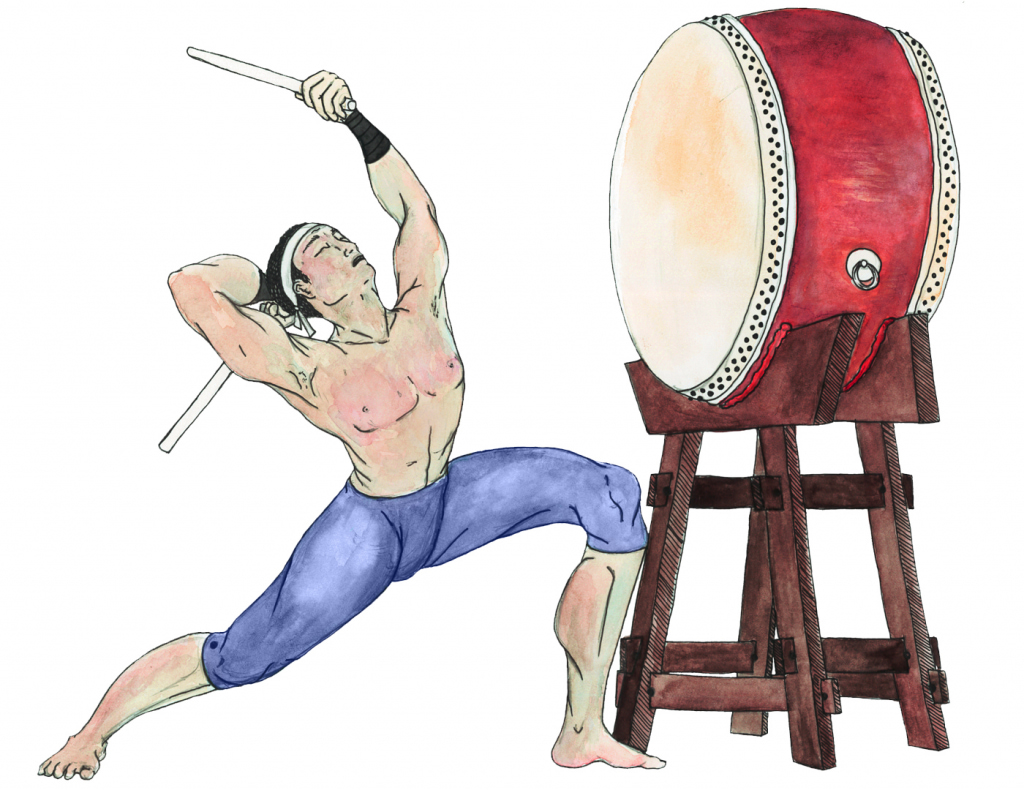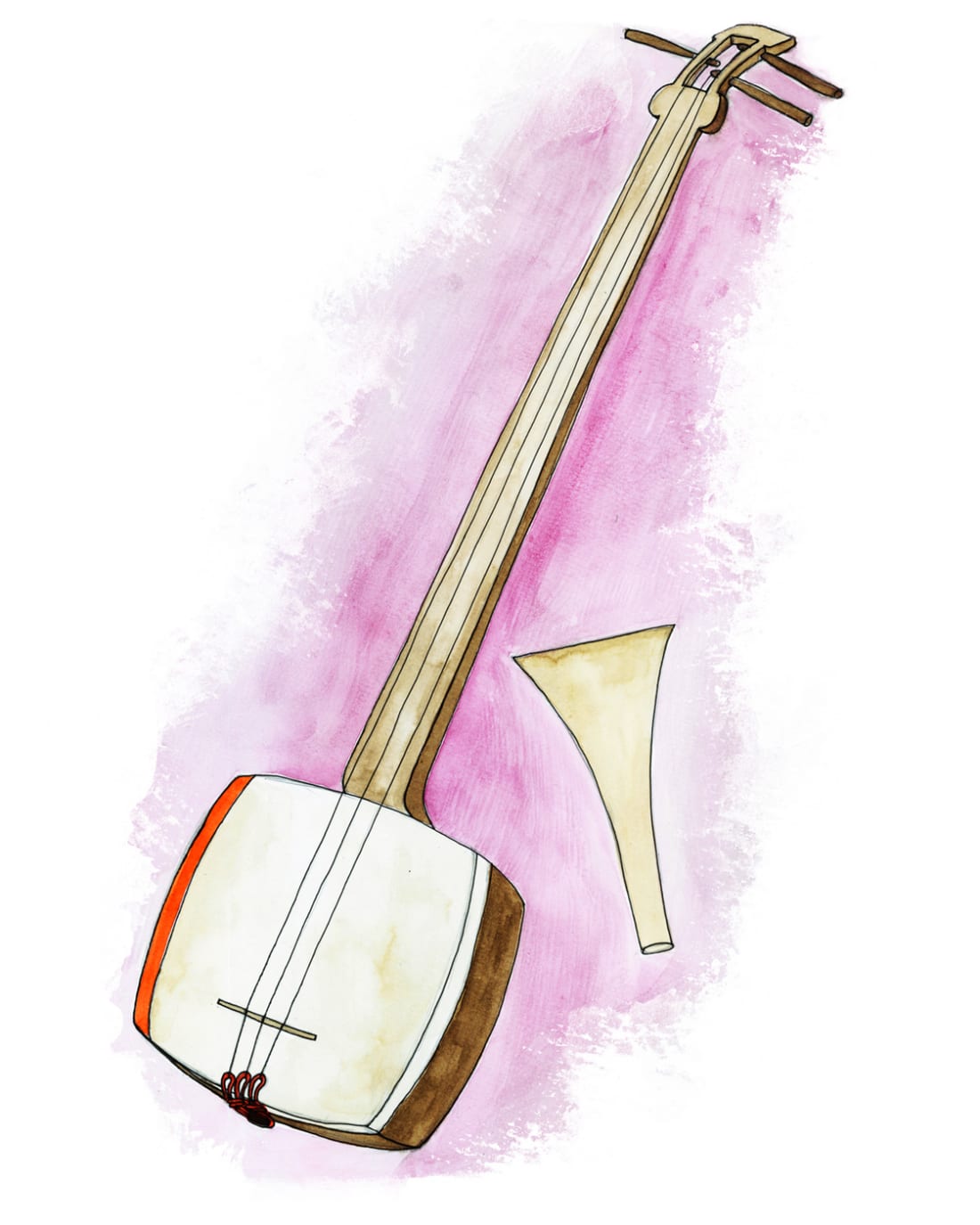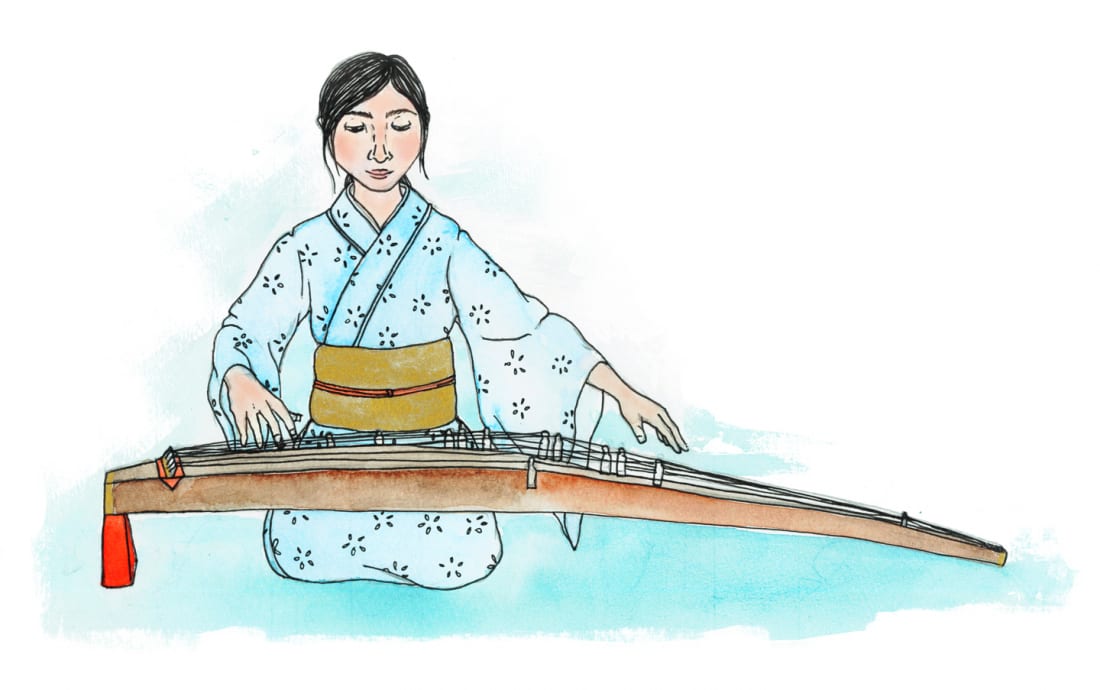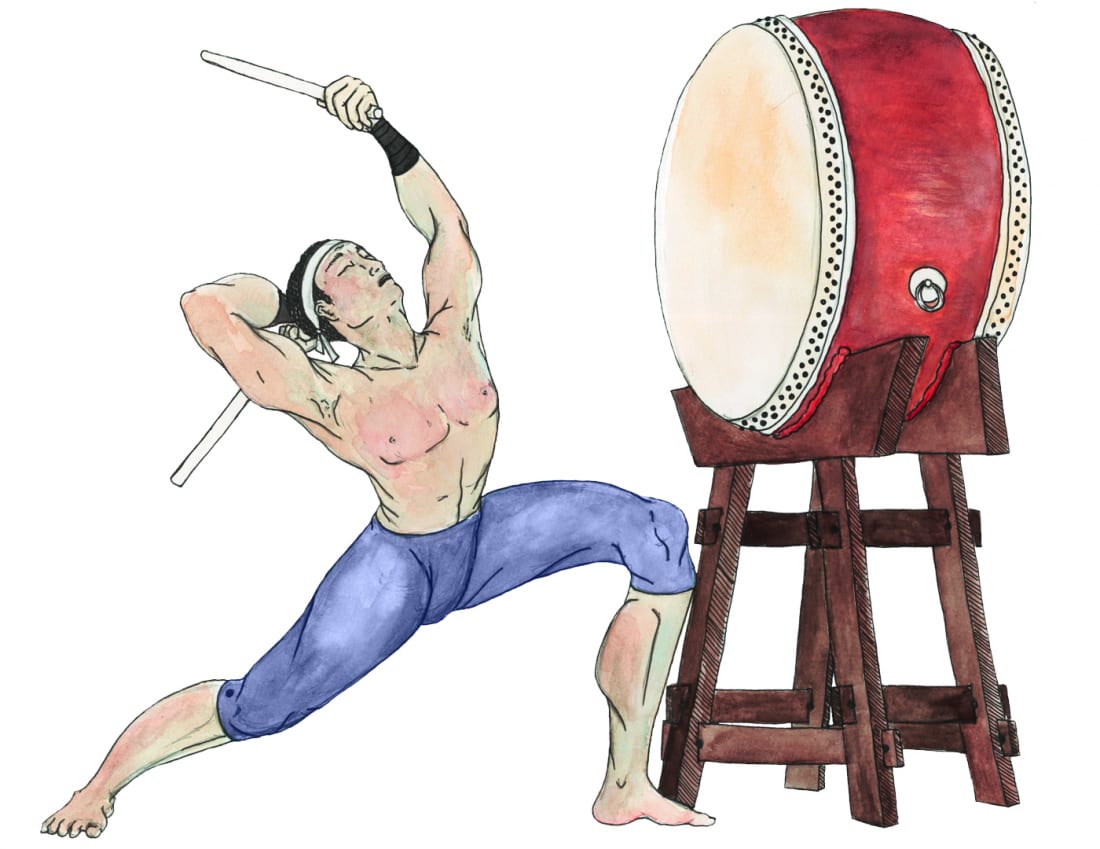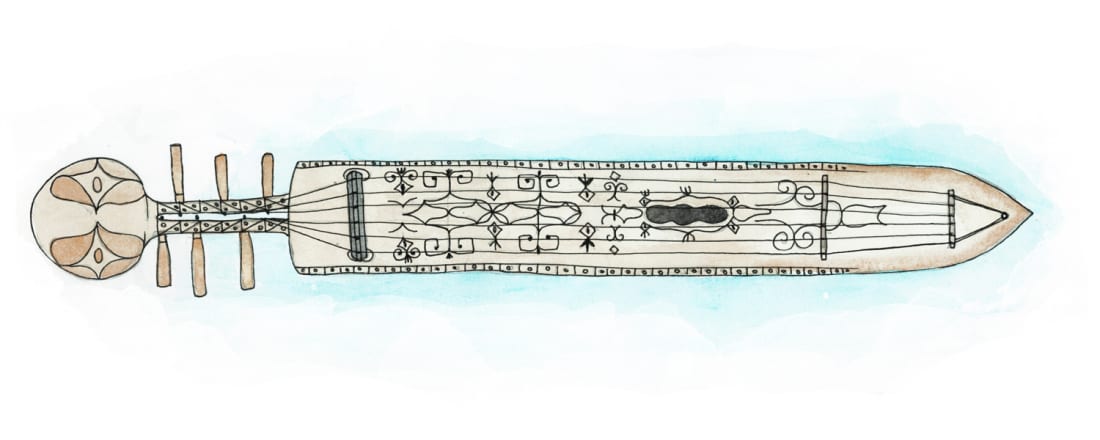Shamisen
This Japanese instrument has a basic form similar to that of the banjo, with three strings that are plucked with a large pick called a bachi. The neck is designed to allow the lower string to connect with the fingerboard, creating a unique buzzing sound when played, known as sawari.
The shamisen has a relatively short history in Japan. It’s believed to have been inspired by instruments that arrived in Osaka from China in the 16th century. The shamisen was first adopted by blind musicians, street performers and geisha. Their performance styles meant the shamisen became associated with folk music and narrative performances, and quickly became the expected accompaniment to kabuki theatre. While the shamisen had already captured the hearts of the common people, it wasn’t long before kabuki and its musical accompaniment, the shamisen, climbed the social ladder and found a place in Japanese high culture.
Today, it’s the shamisen’s roots as an instrument of the people and its connection to folk music that appeals to modern musicians. With a history of being played by blind street performers, who relied on improvisation instead of sheet music, the shamisen values individuality and raw emotion with few rules to follow. Modern musicians are making the most of this by using the shamisen for a variety of genres from rock to jazz, and even bluegrass. The shamisen also recently made an appearance in the animated film Kubo and The Two Strings, with the partially-blinded main character, Kubo, performing in the streets of his local village.
Koto
The standard Koto has 13 strings, plucked with three finger picks. Unlike the shamisen, the koto began life as a musical instrument of the royal court, which made it inaccessible for ordinary people. This all changed in the 17th century when one of the court’s own koto musicians began teaching koto to a blind shamisen player. This student was known as Yatsuhashi Kengyo, and he’s credited for bringing koto music to the people, and is even called “the father of modern koto music.”
Traditional koto music was played by the well-educated and demanded precise, technical skills. Despite this, koto musicians have repeatedly defied convention, resulting in a traditional instrument that has edge in the 21st century. Today its boundaries continue to be pushed by contemporary artists such as Michiyo Yagi who uses the koto for improvisation. More recently pop duo YY has also incorporated koto into their DJ sets.
Taiko
Taiko (Japanese drums) are so deeply rooted in Japanese culture that they feature in the Nihon Shoki, one of Japan’s oldest history books. It is said that the sun goddess, Amaterasu, sealed herself inside a cave, plunging the world into darkness. She refused to reappear until Ame-no-Uzume, the goddess of revelry, threw over a sake barrel and danced ferociously upon it, tearing off her clothes. This passionate dance on an upturned barrel is said to be the birth of taiko music.
Taiko have long been associated with religious ceremonies and cultural festivals. Modern taiko music did not appear until the mid 1900s, when a jazz musician named Daihachi Oguchi broke tradition and formed the first taiko ensemble. Today taiko groups can be found throughout Japan and touring the world bringing with them the intensely physical, rhythmic magic of taiko. Taiko music is as a much a dance performance as it is a musical art form, with professional players requiring incredible strength and endurance to fully express the power and raw energy of the taiko.
Tonkori
The tonkori is a fretless 5- to 6-stringed instrument belonging to the indigenous Ainu people of Hokkaido. The songs of the tonkori are distinctive – traditionally they have no beginning or end and are heavily inspired by nature with themes such as birdsong and weather. With the tonkori being closely connected to the Ainu, it has sadly struggled to survive. Ainu culture suffered during the Meiji Period when they were forcibly stripped of their identity, language and culture.
Despite these challenges, the sounds of the tonkori can still be heard. OKI, an Ainu-Japanese musician, mastered the tonkori in Hokkaido and now uses the Japanese instrument to combine traditional Ainu music with reggae and electronica – sharing Ainu culture with the world. OKI encourages people to understand the tonkori not as a fretless guitar with limited melodies but as a rhythm instrument with infinite possibilities.

